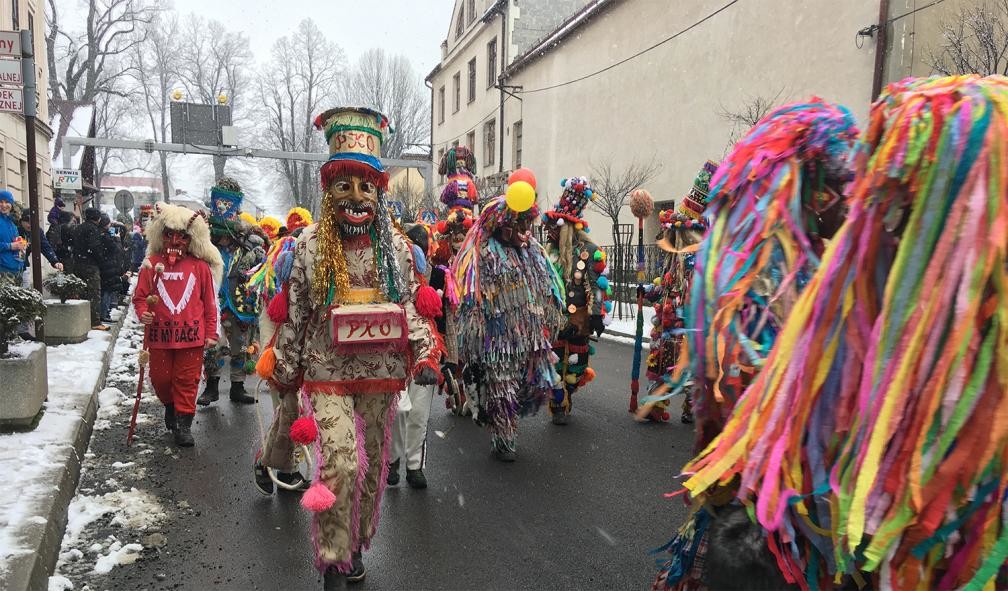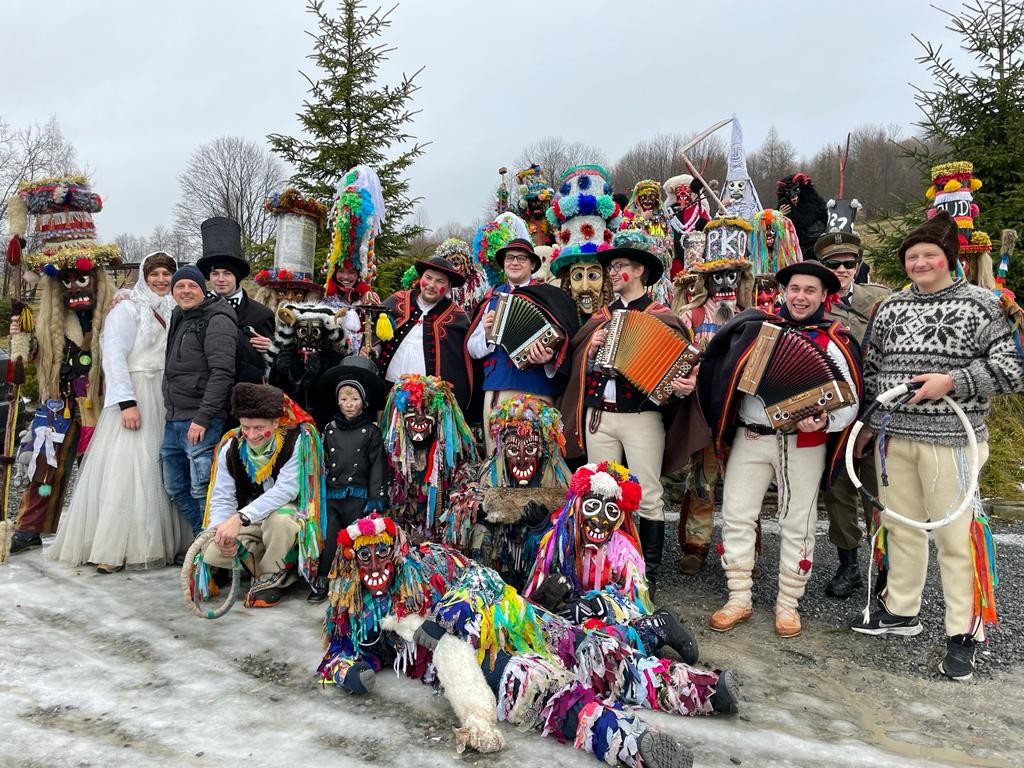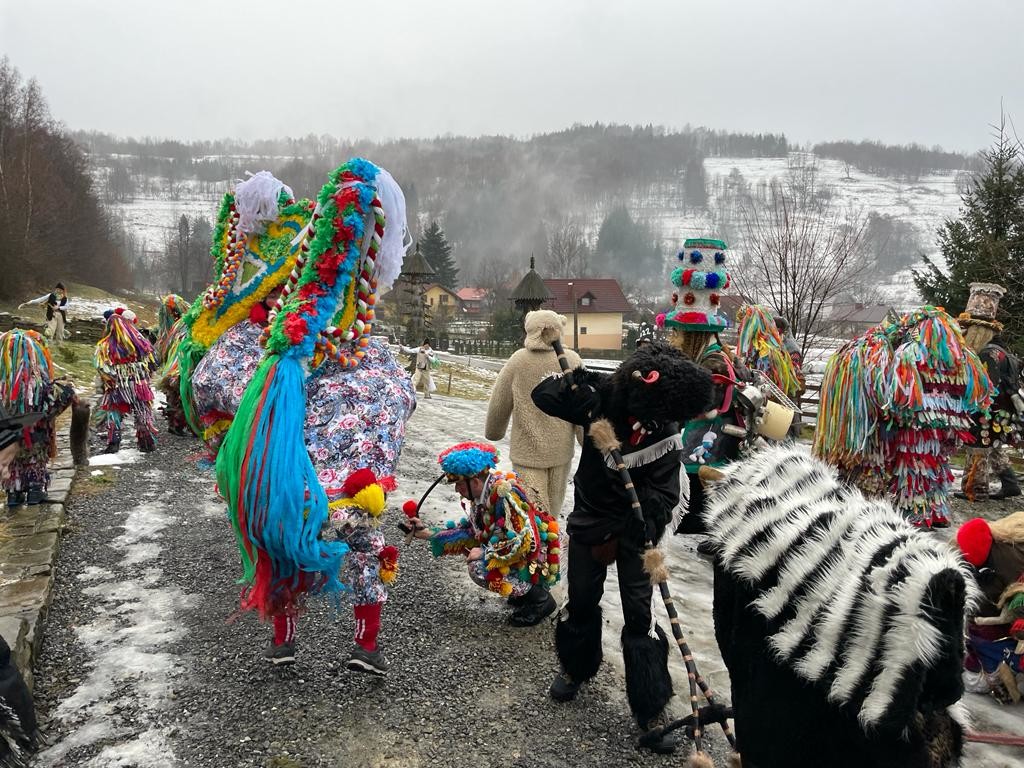
For those newcomers to Polish culture and traditions, many of you will be asking "How come these Pagan influences have stuck around? Why are they tolerated?" It is ironic, yes! And, throughout the year, there are numerous acts of heresy that can be witnessed in and around Poland - In March, Polish children take great pleasure in burning, beating and drowning Marzanna, the pagan goddess of winter's end. June/July sees a huge turnout for flower wreaths and burning pyres to welcome the summer (Wianki). In November, All Saints' Day involves graveside candle lighting, which has its origins in pagan ancestor worship. The answer comes down to the Catholic church and its historic strategy of incorporating many non-Christian aspects of local pagan traditions into its own calendar of saintly observance and feasting. Even your Christmas tree that you put up and decorate is the legacy of druidic habits from the Europe of old! In a similar fashion, Koliada has since been adapted into Christian celebrations that we will speak of in this article.
Kolędy
Definitely the most 'wholesome' and familiar for those of you hailing from a Western European country. The singing of Christmas carols, which Poles call 'Kolędy', are nowadays associated with Christian hyms or secular tunes about how wonderful the holiday season is. Interestingly enough, there are aspects of Koliada that suggest that songs and incantations were used to evoke pagan fertility spirits - those who ensure the birth of healthy children, as well as delivering a good harvest year. So, Kolędy are more pagan than you probably expected!
Jasełka
There are also, of course, nativity plays recounting the birth of Jesus in Bethlehem and the visit of the three kings bearing gifts - Poles call these 'Jasełka'. As squarely Christian as this may seem, it is possible to find oddball variations on the costumes worn, which hark back to the wild and unhinged pagan past of Poland. More on that shortly...
Herody
Another form of nativity play that occurs in Poland recounts the tale of King Herod of Judea. Herod is known for an atrocity, recounted in the Gospel of Matthew, as 'The Massacre of the Innocents.' Upon being informed by the three wise men that the Saviour had been born in Bethlehem, Herod, fearing he might lose his throne to this new ‘king of the Jews', ordered the execution of all young male children in the vicinity. In a 'Herody' performance, children dressed in folk costumes resembling the characters of King Herod, an angel, a bull, a soldier, a Jew, Death and the Devil (and sometimes others) go on to demonstrate how the king was duly punished. The heights of black comedy are reached, as Death and the Devil argue over the wicked king’s soul while they chase him around. As it's bit too dark and boisterous for church, after Christmas you’ll likely see children in strange homemade costumes all over the market square as seemingly every school class takes a turn at performing a version of this play and carolling on its stage. Oddly adorable.Weird masked Kolędowanie from the south!
Of all the forms of 'caroling' spoken about here, none are quite as out-there (by Western standards) as the Kolędowanie from the south and east of Poland. Featuring ethno-folk presentations of masked performers with ample fibrous frills and swishes, that could easily be mistaken as something Voodoo the Carribean or some of those wildly-colourful parades from Central and South America. These are about as far from gowned and restrained clergy and Christmas choirs as you can get, and, as you can guess, their origins are not O.G. Roman Catholic!The earliest accounts of Koliada are from the 13th and 15th century, specifically from Christian preachers in Central and Eastern Europe expressing their disapproval of these masked hollering pagans and their ritual hullaballoo. Due to a lack of historic records, many aspects of pre-Christian Slavic rituals and traditions have been left to speculation and assumption, however, we do know something about the Pagan Slavs' relationship with the darkness, especially during the long nights of the Northern European winter. The darkness was believed to be a time when spirits, both good and bad, would travel. Among the good spirits were deceased ancestors (Dziady), whilst bring out all the evil and devious spirits, it was necessary to dress up in an equally devious manner in order to ward such spirits off. In addition to being dressed up, rowdy song and dance around a big bonfire was the most effective way of keeping them out of reach! Other beliefs centered around Winter Solstice and its proximity to the spiritual world also related to divination and being able to forsee the year ahead was considered to be where the new year began, and staring into the bonfire was treated as a form of divination, Veles, the Pagan Slavic god of the underworld, was believed to take the form of an old man and appear in the mortal world to help give foresight. He would use the sparks of the bonfire to communicate favour or disfavour for a particular new years' query - essentially, if the sparks were long, the outlook was good. Inversely, short sparks were not! The November tradition of Andrzejki (St. Andrew's Day), where scrying wax is suppose to give hints to your soon-to-be betrothed, apparently shares the same divinating origins.

Fast forward to the 21st century, and there's a cast of stack-hatted, raggety-looking characters that are accompanied by accordians and ethno-string music. One character that makes numerous appearances in Polish folklore is Turoń, a festive monstrosity in the form of a black, horned and shaggy animal with a flopping jaw. Turoń is a symbol of fertility, and whenever he accompanies a caroler group into a house, he jumps around, dancing and neighing like a donkey. He's especially fond of playing tricks on women, whom he chases around the house, provokes and sometimes hits with his jaw - again, this guy is a horny symbol of fertility. During the carol singing, Turoń claps his jaw to the rhythm of the song and rings the bell on his neck.




Comments